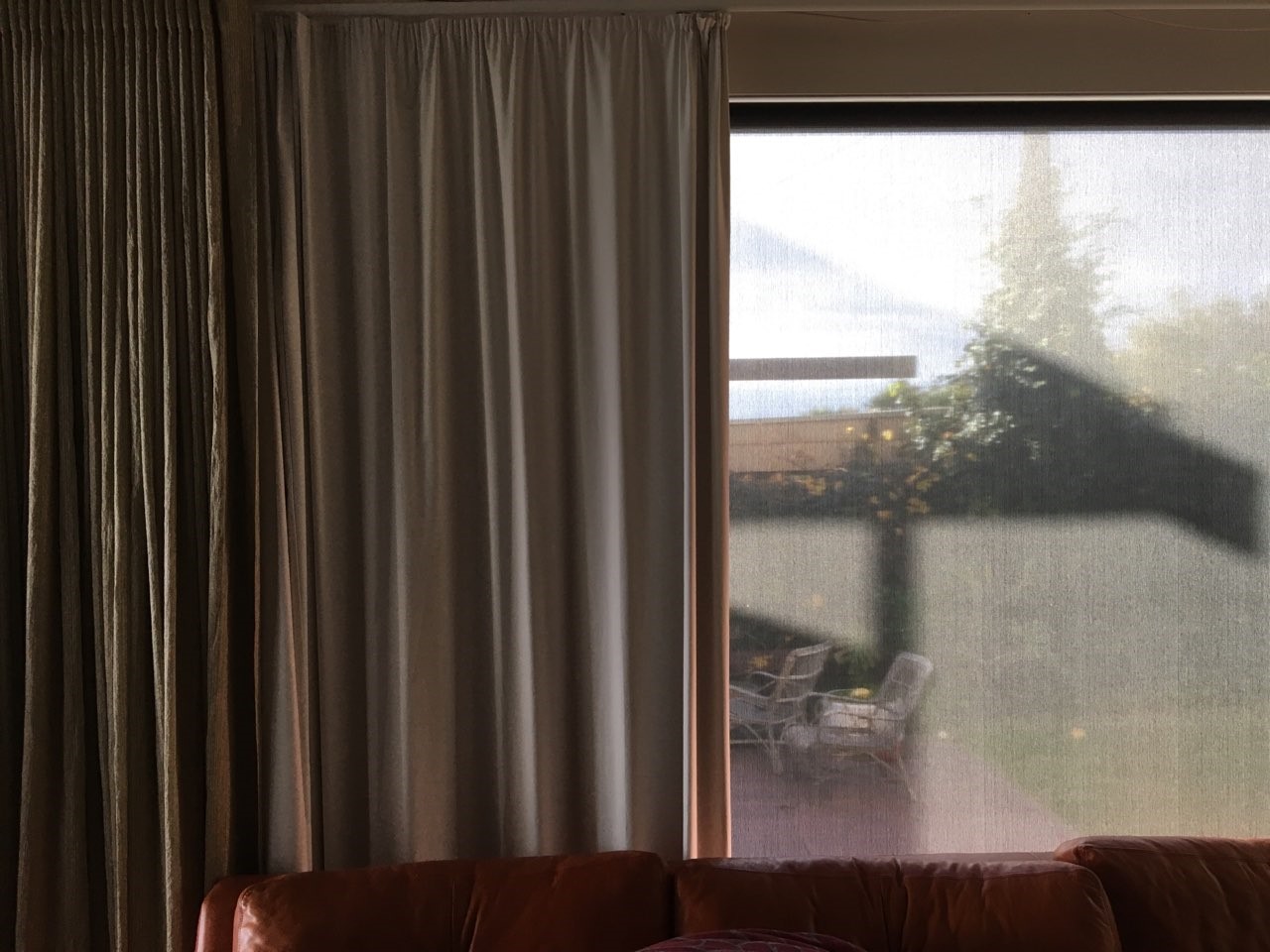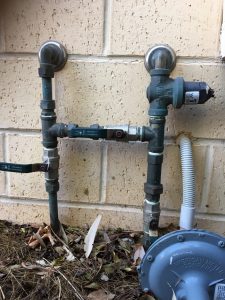Written by homeowner Damien Mills on his experience on building and living in an energy efficient home.
For me a “nice” house is open. Open views, open windows, a sense of space and being connected to the outside. As I sit here writing I can see my garden, the stormy skies; there are no lights, heating or fans running. It is 17°C outside in mid-May and I’m warm in jeans and T-shirt. We haven’t heated or cooled the house since February.
In 2008 we decided to build something nice. Something that would “see us out” and because of this it had to be comfy, but also cheap to run. So, we made an “eco-house”, but not a mung bean, grass roof, mud brick hippy doss. It has terrazzo floors, 2.7 meter panoramic glass windows to see the sunset, 5 bedrooms (4 kids, 2 dogs), 3 bathrooms, a TV room, and a modern kitchen. It is, in short, nice.
Our power bill over the 6-month summer period 2018-19 was $4.72 plus $300 in gas. We have the windows in the bathrooms open all year. We don’t worry too much about turning off our lights and during a heatwave we run our ducted evaporative air-con for days on end. It costs about 10c/hour (or less) to run. If the sun is shining and our rainwater tanks are full it is free. We have 2kw of solar.
So how does it work? It is all in the design (orientation, shade, zones, material choices), the choices of heating, cooling, air flow, and insulation.
We have about 10 days each year that are “hot” or “cold” in the house. The “hot” days are when it is over 40°C and the humidity very high. These days are rare really. The cold days occur on the 4th (plus) day of continuous cold, cloudy days. We have ceiling fans in the bedrooms and lie under the breeze in our bare skin. It has its attractions. These are “tropical nights”. Cold nights just require more blankets.
“Design” is free, particularly if you can choose your block. Get one that is long along north boundary and narrow on the west boundary. Then you house will be the same. Build as far south on the block as you can. In Adelaide these blocks are rare. If this is not possible, you want the block that faces south, so the back faces north.
More north glass is better. Windows floor to ceiling. You won’t regret it. Less south glass is better. Put black mesh blinds in the north and west windows. Then thick curtains with white block-outs. Just thick curtains with the white block-out elsewhere. The curtains are insulation. The blinds are heaters. Really powerful heaters, and they are free to run. These will raise the temp of your house from 16°C to 26°C in 3 hours on a cold, clear winter day.
Do NOT put a tin verandah on the north-side! A grapevine is ideal. Removeable shade cloth is a MUST. Use 2 layers. Light sails above and dark below. Less glare and maximum shade. No radiant heat underneath! Put the sails up the October long weekend and take them down during Easter. Lovely shade in summer. Nice and bright in winter.
Put a garden along the northern fence. One with plants that lose their leaves in winter. Lawn is an evaporative cooler. Use it to your advantage. Trees are too. Consider their placement and type.
Is underfloor heating worth the cost? Yes. Like a puppy is. It is carnal. Weirdly nice. Cold hands on a warm mug. Put it under tiles in the living rooms. Especially where you prepare food. Soon you will be able to heat that floor for very low cost as peaky power producers and transmission providers seek customers to pay for power that would otherwise be dumped. We do it for 100 days at around $4 per day. Compare that to $4 per hour for reverse cycle air-con.
GOOD quality ducted evaporative cooling is capable of lowering the temperature by 16°C on a 40°C low humidity day. From 40°C to 24°C for 10 cents per hour (or less if you have solar and rainwater as we do).
You want insulation everywhere. In the internal walls, the external walls, in the ceilings (batts), under the roof (foil). This has the added bonus of reducing noise – a lot.
Get a solar hot water service. Gas boost. No brainer.

LED lights everywhere. Also, a no brainer. Gas cook-top. Electric oven. Hardwood timber floors upstairs. They are just better. No mites in the carpet. Hold heat. Natural. Get a timber frame for the house for the same reason.
Plumb your house for rainwater. Your plumber will know about the “H” tap arrangement. Separate the toilets in a different “run”. Then, if the water quality is poor, you just flush it away. Think about where the pump goes. You will need a connection to both power and the tanks.
This is a system. It all works together. You need to work with it by regulating air flow, shade and water use. The house is bright in winter (less S.A.D) and darker in summer.

